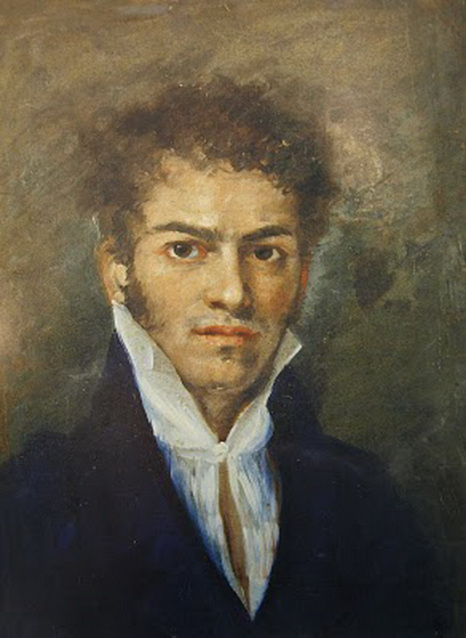In the memoires of the priest Robert Walsh (1772-1852), an attaché at the British Embassy in Constantinople, there survives a description of an exceptional theatrical performance that was staged in the spring of 1821. The account provides a rare glimpse of the culture, ambitions, and also dangers faced by the Christian population of Constantinople on the eve of the revolution.
‘Amongst those that had taken shelter in the embassy gardens was an unfortunate Greek artist by the name of Pitzamanos, from Corfu. He lived [at that time] in Constantinople, practising his art, and, as he had had some classical education, he utilised it in a variety of ways in his work. Amongst other things, he had proposed to his neighbours that they stage an ancient Greek tragedy, promising that he himself would see to the scenery and costumes. His idea was accepted, but, instead of a work by Euripides or Sophocles, they chose one more modern, written by some Greek in Venice, which dramatised events during the fall of Constantinople to the Turks and the slaughter of Greeks who had sought sanctuary in Agia Sofia. However, at that time the Turks were suspicious of everything. The guard raided the theatre. The audience had time to escape, but the owner of the house that had been loaned for the performance was immediately arrested. He was a pharmacist in Pera. He vainly tried to explain that he had loaned the house to others without knowledge of the use to which it would be put: they beheaded him in front of his own pharmacy. The artist who had managed the costumes and scenery was considered a serious agitator for revolutionary ideas and was targeted by the Turks. He headed straight for the British Embassy building, where he remained hidden for several days. When we discovered him, bearing in mind the prevalent conditions, we tried to provide him with work. Unsure of how much longer our own heads would remain on our shoulders, we decided to record them in some fashion, to send them as souvenirs to our friends back home. And so, we commissioned him to paint our portraits. He succeeded exceptionally well, although there were moments he was overtaken by shock and was forced to stop until his hands no longer trembled. The money he made from this enterprise was used to secure a birth on one of the ships that, ignoring the danger, continued to transport escapees. One evening, he boarded a Russian trading vessel, where he hid in a chest, to reach Odessa safely. From there, he continued to St Petersburg, where he successfully practised his art.


